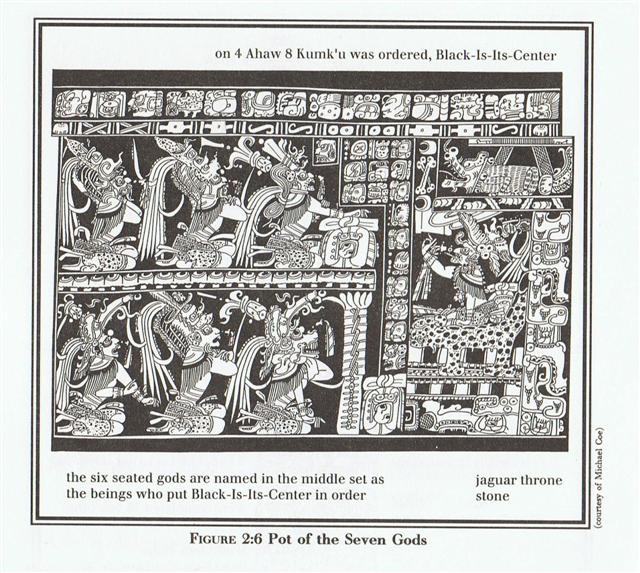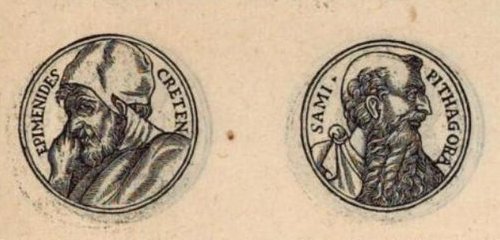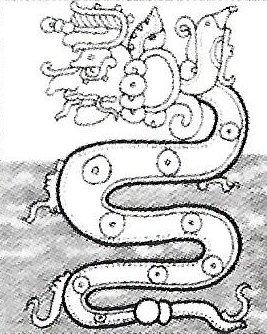502. By 'universally' I mean used by people all over the globe: ... and then, with stunning abruptness, at a crucial date that can be almost precisely fixed at 3200 BC (in the period of the archaeological stratum known as Uruk B), there appears in this little Sumerian mud garden - as though the flowers of its tiny cities were suddenly bursting into bloom - the whole cultural syndrome that has since constituted the germinal unit of all the high civilization of the world. And we cannot attribute this event to any achievement of the mentality of simple peasants. Nor was it the mechanical consequence of a simple piling up of material artifacts, economically determined. It was actually and clearly the highly conscious creation (this much can be asserted with complete assurance) of the mind and science of a new order of humanity, which had never before appeared in the history of mankind; namely, the professional, full-time, initiated, strictly regimented temple priest. The new inspiration of civilized life was based, first, on the discovery, through long and meticulous, carefully checked and rechecked observations, that there were, besides the sun and moon, five other visible or barely visible heavenly spheres (to wit, Mercury, Venus, Mars, Jupiter, and Saturn) which moved in established courses, according to established laws, along the ways followed by the sun and moon, among the fixed stars; and then, second, on the almost insane, playful, yet potentially terrible notion that the laws governing the movements of the seven heavenly spheres should in some mystical way be the same as those governing the life and thought of men on earth. The whole city, not simply the temple area, was now conceived as an imitation on earth of the cosmic order, a sociological 'middle cosmos', or mesocosm, established by priestcraft between the macrocosm of the universe and the microcosm of the individual, making visible the one essential form of all. The king was the center, as a human representative of the power made celestially manifest either in the sun or the moon, according to the focus of the local cult; the walled city was organized architecturally in the design of a quartered circle (like the circles designed on the ceramic ware of the period just preceeding), centered around the pivotal sanctum of the palace or ziggurat (as the ceramic designs around the cross, rosette, or swastika); and there was a mathematically structured calendar to regulate the seasons of the city's life according to the passages of the sun and moon among the stars - as well as a highly developed system of liturgical arts, including music, the art rendering audible to human ears the world-ordering harmony of the celestial spheres. It was at this moment in human destiny that the art of writing first appeared in the world and that scriptorially documented history therefore begins. Also, the wheel appeared. And we have evidence of the development of the two numerical systems still normally employed throughout the civilized world, the decimal and the sexigesimal; the former was used mostly for business accounts in the offices of the temple compounds, where the grain was stored that had been collected as taxes, and the latter for the ritualistic measuring of space and time as well. Three hundred and sixty degrees, then as now, represented the circumference of a circle - the cycle of the horizon - while three hundred and sixty days, plus five, marked the measurement of the circle of the year, the cycle of time. The five intercalated days that bring the total to three hundred and sixty-five were taken to represent a sacred opening through which spiritual energy flowed into the round of the temporal universe from the pleroma of eternity, and they were designated, consequently, days of holy feast and festival. Comparably, the ziggurat, the pivotal point in the center of the sacred circle of space, where the earthly and heavenly powers joined, was also characterized by the number five; for the four sides of the tower, oriented to the points of the compass, came together at the summit, the fifth point, and it was there that the energy of heaven met the earth. The early Sumerian temple tower with the hieratically organized little city surrounding it, where everyone played his role according to the rules of a celestially inspired divine game, supplied the model of paradise that we find, centuries later, in the Hindu-Buddhist imagery of the world mountain, Sumeru, whose jeweled slopes, facing the four directions, peopled on the west by sacred serpents, on the south by gnomes, on the north by earth giants, and on the east by divine musicians, rose from the mid-point of the earth as the vertical axis of the egg-shaped universe, and bore on its quadrangular summit the palatial mansions of the deathless gods, whose towered city was known as Amaravati, 'The Town Immortal'. But it was the model also of the Greek Olympus, the Aztec temples of the sun, and Dante's holy mountain of Purgatory, bearing on its summit the Earthly Paradise. For the form and concept of the City of God conceived as a 'mesochosm' (an earthly imitation of the celestial order of the macrocosm) which emerged on the threshold of history circa 3200 BC, at precisely that geographical point where the rivers of Tigris and Euphrates reach the Persian Gulf, was disseminated eastward and westward along the ways already blazed by the earlier neolithic. The wonderful life-organizing assemblage of ideas and principles - including those of kingship, writing, mathematics, and calendrical astronomy - reached the Nile, circa 2800 BC; it spread to Crete on the one hand, and on the other, to the valley of the Indus, circa 2600 BC; to Shang China, circa 1600 BC; and, according to at least one high authority, Dr Robert Heine-Geldern, from China across the Pacific, during the prosperous seafaring period of the late Chou Dynasty, between the seventh and fourth centuries BC, to Peru and Middle America ... Some ideas in the rongorongo texts were derived from ancient Mesopotamia and the fundamental axiom may then have been a fixed stone-hard order up above in the sky in contrast to the comparably soft and perishable world down below. An astronomer could never lie but the Cretans did it all the time.
... The life-force of the earth is water. God moulded the earth with water. Blood too he made out of water. Even in a stone there is this force, for there is moisture in everything. But if Nummo is water, it also produces copper. When the sky is overcast, the sun's rays may be seen materializing on the misty horizon. These rays, excreted by the spirits, are of copper and are light. They are water too, because they uphold the earth's moisture as it rises. The Pair excrete light, because they are also light ... 'The sun's rays,' he went on, 'are fire and the Nummo's excrement. It is the rays which give the sun its strength. It is the Nummo who gives life to this star, for the sun is in some sort a star.' It was difficult to get him to explain what he meant by this obscure statement. The Nazarene made more than one fruitless effort to understand this part of the cosmogony; he could not discover any chink or crack through which to apprehend its meaning. He was moreover confronted with identifications which no European, that is, no average rational European, could admit. He felt himself humiliated, though not disagreeably so, at finding that his informant regarded fire and water as complementary, and not as opposites. The rays of light and heat draw the water up, and also cause it to descend again in the form of rain. That is all to the good. The movement created by this coming and going is a good thing. By means of the rays the Nummo draws out, and gives back the life-force. This movement indeed makes life ...
Therefore we should count to 400 in the C text, which will bring us to the silent bird in Cb1-13:
A bird which closes its beak and falls silent on her way to sleep ought to illustrate the opposite side of time-space compared to the cock crying out - i.e. the opposite to early morning (in the dirunal cycle and therefore also in the cycle of the year).
I.e., offspring instead of spring - egg inside (female) instead of penis outside (male):
In Roman times this point of change had been set by Julius Caesar to day 273 = 3 * 91.
A 4th quarter would then bring the cycle to its end and to the birth of a new Sun.
Also the Mayas had a silent bird:  ... According to my reconstructions the bird of sunset - the Owl (Muan, Moan, Muwan) - came 65 days before the end of the year; and God L had not only cigarettes but also a Muwan bird headdress:   |
||||||||||||||||||||||||||||||||||||||||||||||||||||||||||||||||||||||||||||||||||||||||||||||||||||||||||||||||||||||||||||||||||||||||||||||||||||||||||||||||||||||||||||||||||||||||||||||||||||||||||||||||||||||||||||||||||||||||||||













